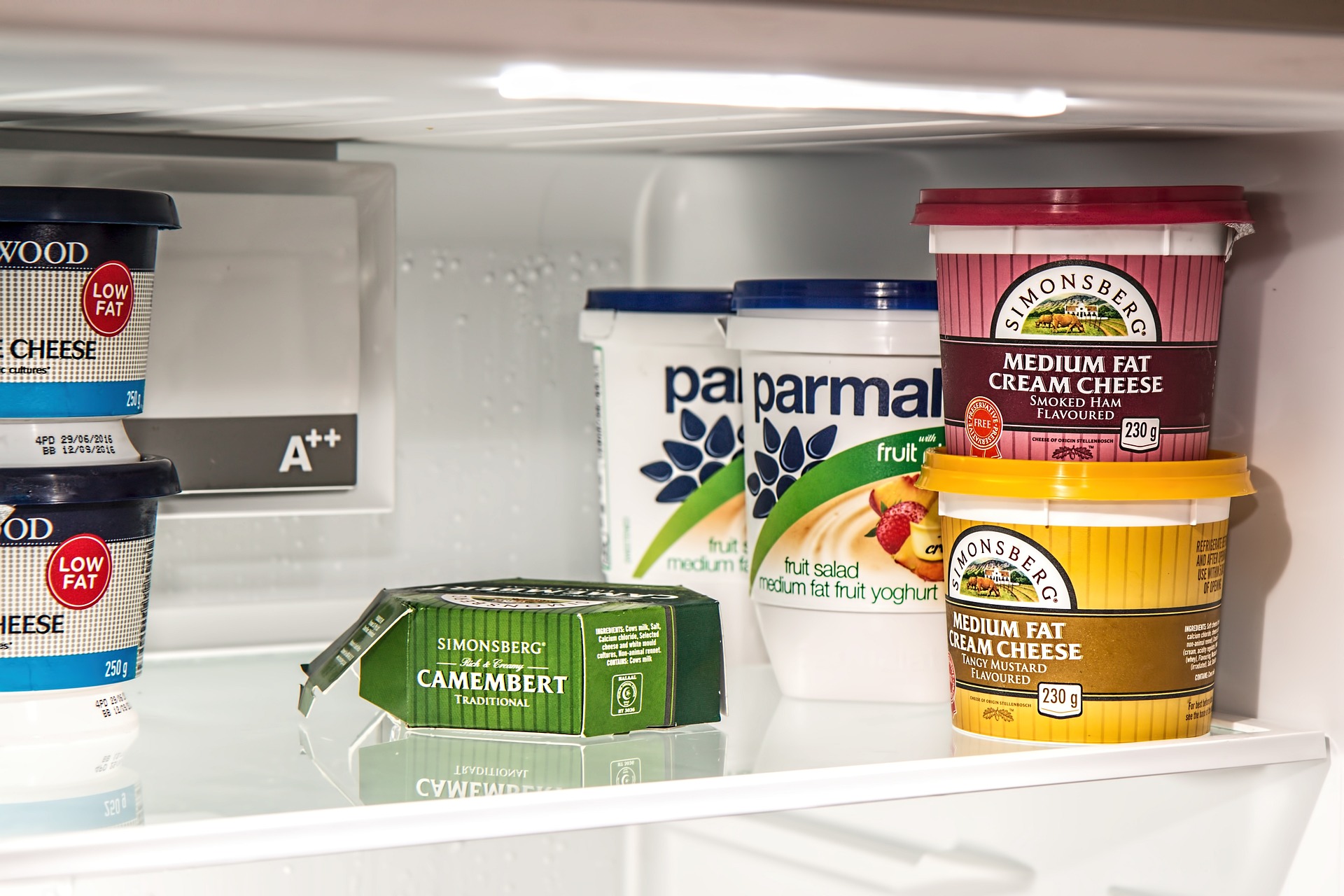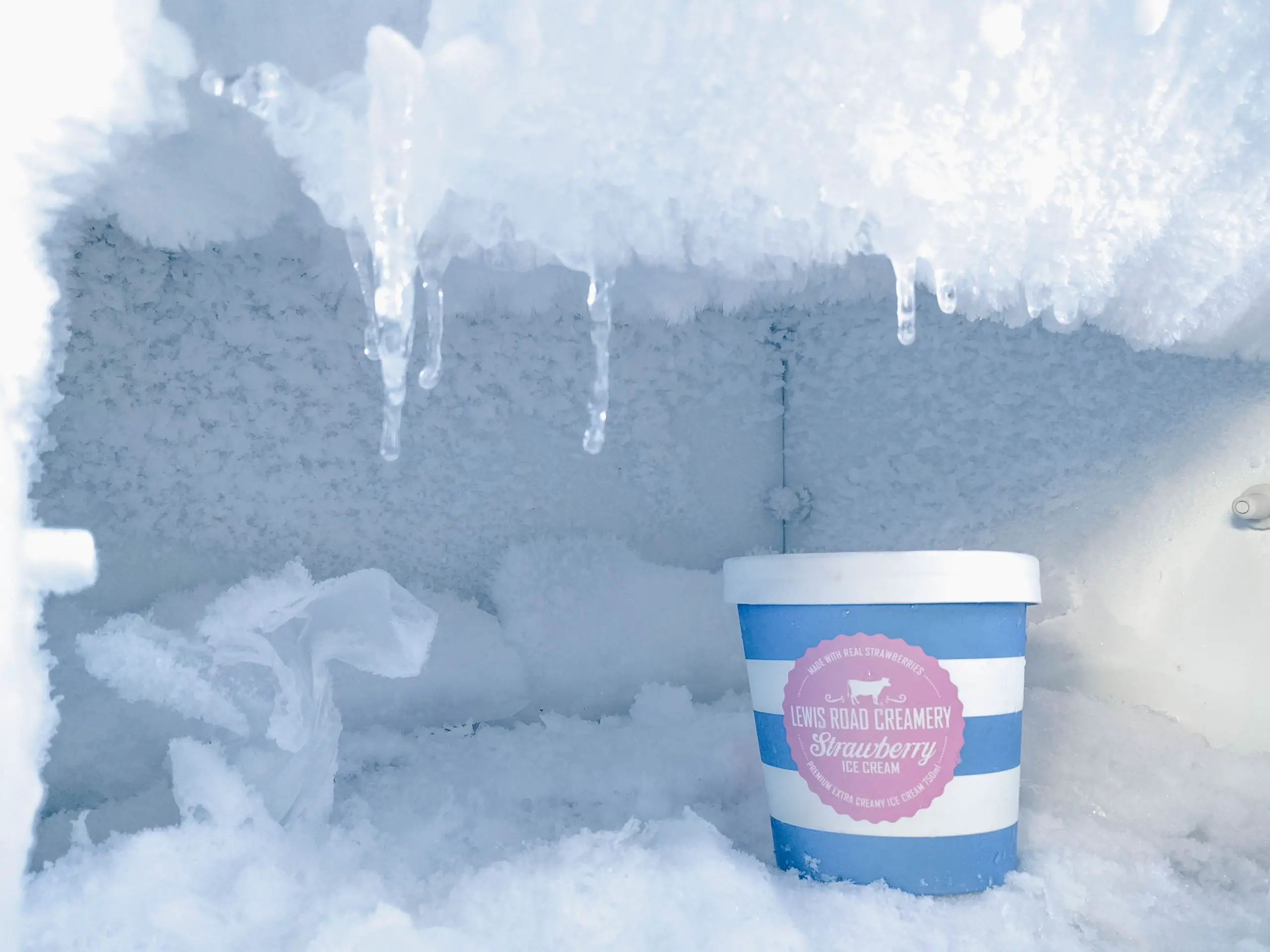If you have noticed that your freezer is frosting up more often than usual, you may have some trouble figuring out the cause. You can look at several factors to see if your freezer is freezing up, including the defrost timer, door seal, gaskets, and condenser coils.

Why is my Freezer Frosting Up?
Manufacturers build refrigerators to produce cool settings where food can be safely stored. Still, the back panels of the compartments in your refrigerator are not supposed to freeze over and start to accumulate ice. Why would that occur, then?
If the back of your refrigerator starts to freeze, there is probably an air leak around the door that allows warm air inside. The issue will still exist if water freezes in the defrost drain and clog it. The defrost system, such as the defrost thermostat or defrost heater, may have failed, which would explain the freezing.
This post will explain why the back of your refrigerator is freezing and what you can do to fix it.
Clean the Condenser Coils
Cleaning the condenser coils in your freezer is an important maintenance task that should be done at least once a year. Clean coils can improve your refrigerator’s energy efficiency, saving you money in the long run.
The best way to clean the condenser coils in your fridge is to use the right tools. It is recommended to use a vacuum cleaner that comes with a brush attachment. This makes the process much easier.
Another tool you may want to use is a long-handled appliance cleaning brush. This can remove dust from the coils and also scrub off stubborn dirt.
You can also get a condenser coil cleaning kit. These kits are specifically designed to remove dirt and debris from your refrigerator’s condenser coils.
Check if the Gaskets are Brittle
If your freezer is starting to frost up, it may be time to check if the gaskets are brittle. A brittle gasket will allow warm air to flow through it. This means your freezer will not get cold enough, and you will probably have to add freon.
The most obvious way to tell if the gaskets are brittle is to check for gaps around the door. You can use a small swab or even your hand to see if there is a gap. If there is, try heating the seal with a hair dryer. This will soften it up a bit.
You might also want to take a closer look at the sealing mechanism. Some manufacturers recommend lubricating the seal. If you’re unsure where to start, ask a store employee for help.
Avoid Putting Warm or Hot Food in the Freezer
There are some important things to remember when you’re freezing food. One of them is that you should never put hot or warm foods in the freezer.
This is because hot and warm foods can raise the freezer’s temperature, making it more difficult for the freezer to function correctly. This can cause problems for other food items in the freezer, too.
Another issue to remember is that bacteria can grow in warm and moist environments. It can multiply quickly in this temperature range. If you are unsure whether a particular food is safe to freeze, check the ingredients and the storage date. If the label says it’s not good to freeze, don’t do it.
The general rule is to cool foods first, then freeze them. This can help to reduce the number of bacteria that will grow in the food.
How to Prevent Freezer Frost?
Fortunately, frost buildup is frequently avoidable with a little caution and thought. Here are five quick ideas to prevent frost from building up in your freezer:
- Keep the door closed: After each use, make sure the freezer door is completely closed. Verify that nothing is preventing the door from closing all the way.
- Organize your freezer: A well-kept freezer can make it easier for you to find what you need and can cut down on the time you spend opening and closing the freezer door.
- Before storing, let the food cool off because putting hot food in the freezer might cause dampness. Before putting food in the freezer, let it cool and remove any moisture from the packaging’s outside.
- Examine the door seal: Gently move your palm around the outside edge of the closed freezer door to feel for any seal damage. If you detect any cold air escaping, the seal might need to be changed.
- Use a freezer thermometer to check the temperature and ensure your freezer is set to the manufacturer’s suggested level (often 0°F). You might need to troubleshoot your freezer or contact a repairer if it becomes too warm or chilly.
How do you Know When Ice Build-up is a Problem?
You must take action if the ice has grown so thick that it is occupying freezer space or preventing the door from closing. Another red flag would be if you noticed a rapid increase in ice.
There are a few easy things to examine if you suspect your freezer has issues.
How do you Avoid Frost Build-up?
When you open the door, try to do so as infrequently as you can and leave it open for the shortest time possible. This can be made simpler by meticulously organizing your freezer so that items are easy to access without delving through.
Give fresh food enough time to cool before putting it in the freezer if you plan to freeze it. If hot food is still steaming, the steam will produce condensation, freezing and solidifying into ice.
Additionally, you must ensure that food is either tightly wrapped or put in properly sealed containers since moisture may leak from the food and subsequently freeze, aggravating your ice problem.
Additionally, keep your freezer from being overfilled. For maximum effectiveness, it’s preferable to maintain your freezer between 70 and 80 percent full.
Frozen food keeps things cold, but if there is too much in the freezer, there isn’t enough room for the air to flow, preventing the freezer from working well.
How do you Remove Frost Build-up?
The best method for defrosting a freezer is to unplug it, leave the door ajar, and wait for it to defrost. Utilize as much food in the freezer as possible in advance.
Any food left over should be taken out and stored in the refrigerator or cold boxes with ice packs until you are ready to defrost your freezer.
However, it will only slow down the process. If the ice is extremely thick and you anticipate it will take a while for the food to defrost, it might be worth asking a friend or neighbor if they have any room in their freezer.
After that, please turn off your freezer at the wall and unhook it, making sure to keep the plug up off the ground and out of the way. To absorb the water when the ice defrosts, place towels inside the freezer and in front. Then wait for the ice to thaw and leave the door pushed open.
Once the ice has melted, remove any remaining water, clean your freezer with a cloth and antibacterial spray, and then plug it back in while you wait for the temperature to return to normal.
Can you Leave Frost in a Freezer?
It can be very aggravating if chunks of ice eat up valuable freezer space if space is at a premium. Ice can also prevent the door from shutting correctly, enabling additional warm air to enter and worsen the issue.
Additionally, if left inside the freezer for too long, it may develop an awful, musty odor.
Perhaps more importantly, if you allow frost to accumulate for too long, your freezer will have to work harder, consuming more energy and costing more to operate. Additionally, it increases the strain on the freezer’s operating components, shortening its lifespan.
Defrosting your freezer regularly will help you recognize when something is amiss. If ice is forming in your freezer very quickly, this could be a clue that something is wrong.
Can I Defrost my Fridge Without Turning it off?
You can defrost your refrigerator without turning it off in several ways, yes. For instance, you can command the refrigerator to enter the defrost mode. See the user handbook to determine the precise methods that apply to your refrigerator’s brand and model.
Additionally, you can defrost it by storing a kettle of hot water inside the refrigerator section. Any ice or frost accumulations in the fridge compartment will melt thanks to the heat from the pot.
Conclusion
Both the health of your freezer and the quality of your food will suffer from a frozen freezer. There are many causes for the ice buildup in your freezer, but fortunately, there are just as many simple solutions to stop it from happening again.
